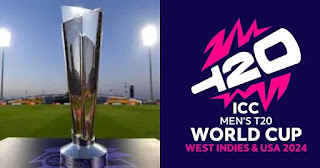Refugee Rights: A Global Responsibility
In a world often marred by conflict, persecution, and natural disasters, the plight of refugees represents one of the most pressing humanitarian crises of our time. Refugees—individuals who are forced to flee their home countries due to war, violence, political instability, or environmental disasters—are among the world’s most vulnerable populations. Their rights, enshrined in international law and human rights conventions, are critical to ensuring their safety, dignity, and future. Yet, these rights are too often ignored, undermined, or violated.
This article explores the foundation of refugee rights, the international frameworks designed to protect them, current global challenges, and what can be done to uphold these rights in the face of growing displacement.
Understanding Who Refugees Are
According to the 1951 Refugee Convention, a refugee is defined as a person who is unable or unwilling to return to their home country due to a well-founded fear of persecution based on race, religion, nationality, membership of a particular social group, or political opinion. This definition was later expanded by the 1967 Protocol and various regional agreements, such as the Organization of African Unity (OAU) Convention and the Cartagena Declaration in Latin America.
Refugees are not the same as migrants. While migrants may move to improve their quality of life, refugees flee for their survival. This distinction is crucial in both legal and humanitarian terms.
International Legal Protections
The cornerstone of refugee rights is the 1951 United Nations Convention Relating to the Status of Refugees and its 1967 Protocol, which have been ratified by over 145 countries. These documents outline the legal obligations of states toward refugees, including:
Non-refoulement: The principle that no refugee should be returned to a country where they face serious threats to their life or freedom.
Right to seek asylum: Refugees have the right to seek asylum in another country and have their claims fairly assessed.
Access to basic rights: These include the right to work, education, freedom of movement, healthcare, and protection under the law.
The United Nations High Commissioner for Refugees (UNHCR) is the principal international body mandated to protect refugees and coordinate international responses to refugee crises.
Challenges Facing Refugees Today
Despite international frameworks, refugees face numerous challenges around the world. These include:
1. Border Closures and Hostility
Many countries have tightened their borders and adopted hostile policies in the name of national security. Refugees are often denied entry or detained in inhumane conditions. Some countries build walls or militarize borders to deter entry, while others engage in pushbacks, forcibly returning people without assessing their asylum claims—violating international law.
2. Prolonged Displacement
According to UNHCR data, there are over 100 million forcibly displaced people worldwide as of 2024, with more than 30 million classified as refugees. Many remain in limbo for years or even decades in refugee camps or urban slums, often without legal status or the ability to rebuild their lives.
3. Xenophobia and Discrimination
Refugees frequently encounter racism, xenophobia, and cultural exclusion. Politicians in some countries use refugees as scapegoats, portraying them as economic burdens or security threats, which fuels public resentment and leads to discriminatory laws.
4. Lack of Access to Rights
Even where refugees are granted asylum, many face barriers to accessing healthcare, education, and employment. Without these rights, they struggle to integrate and become self-reliant.
The Role of Host Countries and the Global Community
Protecting refugee rights is not solely the responsibility of neighboring countries or those directly affected by refugee flows. It is a global responsibility, grounded in the principle of international solidarity.
Responsibility-Sharing
Refugees are not distributed evenly around the world. Developing countries host over 80% of the world’s refugees, often with limited resources themselves. Countries like Lebanon, Uganda, Pakistan, and Turkey carry a disproportionate burden. Wealthier nations must increase resettlement opportunities, funding, and support for frontline countries.
Durable Solutions
The UNHCR promotes three durable solutions for refugees:
Voluntary repatriation – Returning home when conditions are safe.
Local integration – Becoming part of the host community.
Resettlement – Moving to a third country that agrees to admit them permanently.
All three require international cooperation, political will, and sufficient resources.
Climate Refugees: The New Frontier
A growing number of people are being displaced not by war or persecution, but by climate-related disasters such as floods, droughts, and rising sea levels. Current international refugee law does not formally recognize climate refugees, leaving millions in a legal gray area without formal protection. This is a growing challenge that the international community must urgently address by updating legal frameworks and providing protections for those displaced by environmental factors.
The Importance of Upholding Refugee Rights
Protecting refugees is not just a legal or moral obligation—it is also a reflection of our shared humanity. When societies uphold refugee rights, they send a powerful message about justice, compassion, and global solidarity.
Moreover, when refugees are welcomed and given the chance to contribute, they enrich host societies culturally and economically. History is full of examples where refugees have become scientists, entrepreneurs, artists, and leaders in their new homes.
What Can Be Done?
To better protect refugee rights, the global community must:
Strengthen international commitments to the Refugee Convention and ensure national laws are aligned with international standards.
Expand safe and legal pathways for asylum and resettlement.
Invest in integration programs that promote education, employment, and inclusion.
Combat misinformation and xenophobia through public education and inclusive narratives.
Recognize and protect climate-displaced persons, adapting international law to address new realities.
Conclusion
Refugee rights are human rights. Every person forced to flee deserves safety, dignity, and the opportunity to live a full life. As conflicts, crises, and climate change continue to uproot lives, the need for compassion, cooperation, and legal protection has never been greater. The international community must rise to the challenge—not just because it is required by law, but because it is the right thing to do.

















